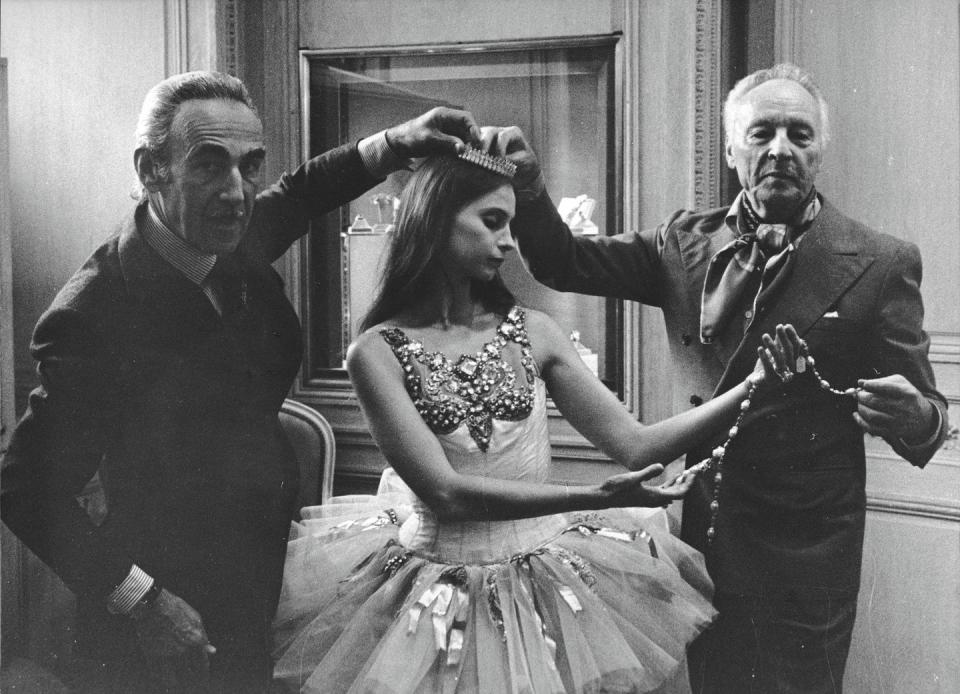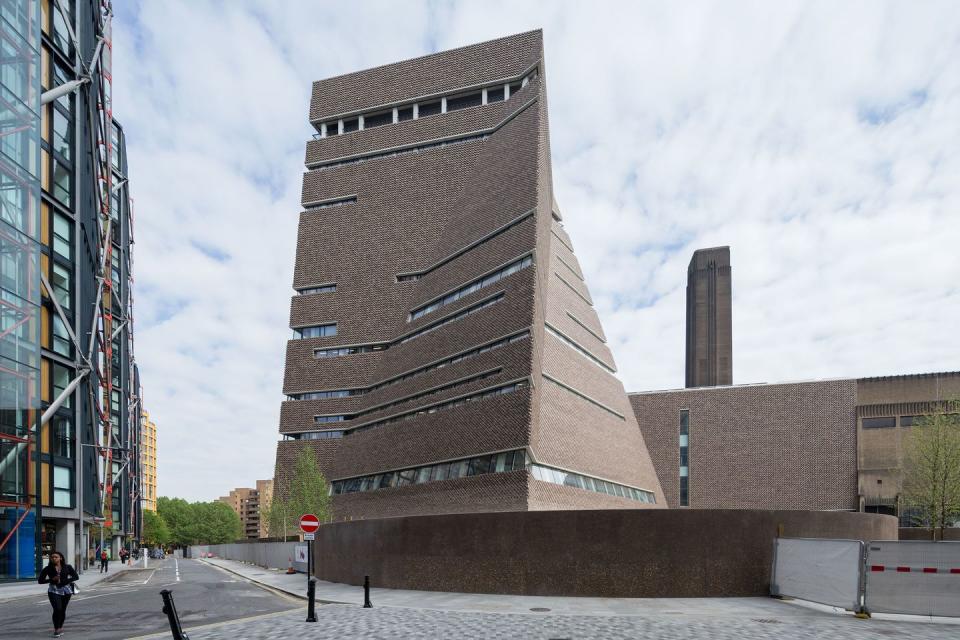For Van Cleef & Arpels, a Decades-Long Fascination with Ballet Culminates in a Dazzling London Festival

- Oops!Something went wrong.Please try again later.
"Hearst Magazines and Yahoo may earn commission or revenue on some items through the links below."
Just because you create some of the world’s most coveted ballerina-shaped jewelry does not, necessarily, mean you need to be a custodian and proponent of modern dance. Yet, for the French maison Van Cleef & Arpels, the bonds between jewelry and dance have proven time and again to be as eternal as gemstones.
Van Cleef & Arpels’s signature ballerina brooches first debuted in the 1940s, born out of founder Louis Arpels’s passion for dance. Two decades later, the maison’s ties to the stage were deepened when Arpels’s nephew Claude (with whom the elder Arpels would often walk to Paris’s Palais Garnier, just a short walk from the family’s Place Vendôme boutique) met the legendary choreographer George Balanchine in 1961. Balanchine so admired the Arpelses’ glittering work, that he created a ballet based on it, Jewels, first performed at the New York City Ballet in April 1967.

Van Cleef & Arpels would go on to collaborate with some of the world’s most celebrated dance minds in the intervening decades, including collaborations with Benjamin Millepied’s L.A. Dance Project and various companies and operas around the world. In 2015, the maison even established an annual philanthropic award for new ballets.
This year, ambition meets scale with the first edition of the Dance Reflections Festival by Van Cleef & Arpels, produced in London in collaboration with the cultural venues Sadler’s Wells, the Royal Opera House, and the Tate Modern. Dance Reflections comprises 17 modern and contemporary dance performances highlighting both major repertory works and new productions from the 1970s to the present. “What drives us is the quality of the works, but also the willingness to collaborate from the artists and from these institutions,” says Van Cleef & Arpels president and CEO Nicholas Bos.

Curated by Van Cleef & Arpels’s dance and cultural programs manager, Serge Laurent, each performance was built on the values of creation, transmission, and education. For a maison that has always been distinguished by its technical prowess, from high jewelry to watchmaking, inventiveness and emotional resonance remain intrinsic to the process of creation. “In all craftsmanship, from the workshop to the design studio, transmission is key,” Bos continues. “It is how our legacy is preserved across the decades.”
Transmission, then, or the way a skill passes from mentor to pupil to become something wholly new, is the connective tissue between the eras, styles, and practices on view at the festival. From Lucinda Child’s seminal 1979 work Dance, set to music by Philip Glass and an original film by the late conceptual artist Sol Lewitt, to the elegiac “Neighbours,” a new duet by Brigel Gjoka and Rauf “RubberLegz” Yasit with music by Rusan Filiztek, the stage has become at once genesis and apotheosis, transformed by Laurent and his collaborators into a cradle for impulse and polish—just like the Van Cleef & Arpels atelier.

While the two-week-long festival winds down in London (Wednesday marks the last day of performances), dance devotees and neophytes alike can look forward to new chapters in what promises to be an ongoing cultural project for Van Cleef & Arpels; the maison has high hopes to bring this first edition of the festival to a host of global cities. Not a bad legacy to be born from a ballerina brooch.
You Might Also Like

